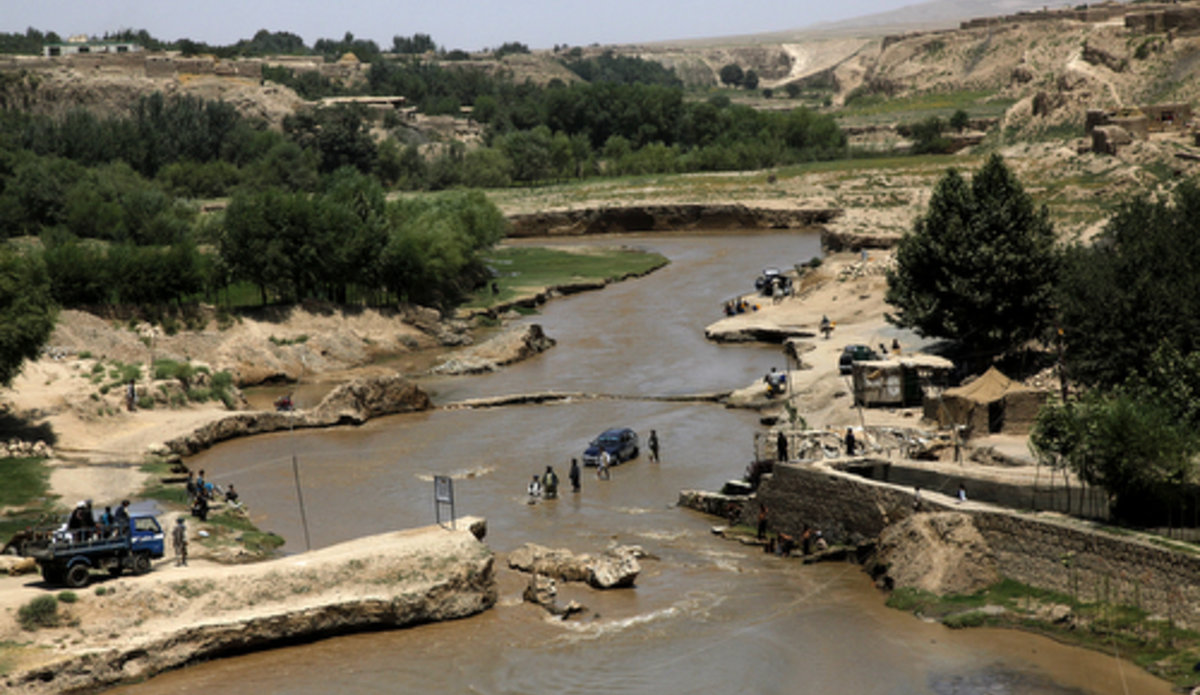On biodiversity day, threat to Afghanistan’s water sources spotlighted
KABUL - From mountain glaciers to rural wetlands, Afghanistan is rich in biodiversity but these sources of water are coming under pressure and need to be protected, according to the United Nations Environmental Programme (UNEP) office in the South Asian nation, on the occasion of the International Day of Biological Diversity.
“In Afghanistan the challenge amidst efforts for national development and growth is to understand, recognize and take action to manage and protect the biodiversity resources that the country possesses, and on which its sustainable development in future decades will be built,” said UNEP’s Country Director in Afghanistan, Andrew Scanlon.
The theme of this year’s International Day for Biological Diversity is ‘Water and Biodiversity,’ which was chosen to coincide with the UN’s designation of 2013 as the International Year of Water Cooperation.
The Day was proclaimed by the UN General Assembly in 1993 to celebrate the ratification of the Convention on Biological Diversity. Signed by 192 countries, including Afghanistan, the convention recognized for the first time in international law that the conservation of biological diversity is a common concern of mankind and is a key ingredient in successful and sustainable development.
Protecting biodiversity is in the world’s self-interest, according to the United Nations. Biological resources are the pillars upon which civilizations are built and nature's products support such diverse industries as agriculture and waste treatment. The loss of biodiversity threatens food supplies, opportunities for recreation and tourism, and sources of wood, medicines and energy. It also interferes with essential ecological functions.
The current decline in biodiversity is largely the result of human activity and represents a serious threat to human development. Despite mounting efforts over the past 20 years, the loss of the world's biological diversity – mainly from habitat destruction, over-harvesting, pollution and the inappropriate introduction of foreign plants and animals – has continued. Urgent action is needed to conserve and maintain genes, species and ecosystems, with a view to the sustainable management and use of biological resources.
“Although seemingly abundant, only a tiny amount of the water on our planet is easily available as freshwater,” said Secretary-General Ban Ki Moon in his message for the Day. “We live in an increasingly water insecure world where demand often outstrips supply and where water quality often fails to meet minimum standards. Under current trends, future demands for water will not be met.”
According to the UN-backed Convention on Biological Diversity, much of the information on Afghanistan’s biodiversity is old and no longer reliable. Little significant information has been added since the onset of war in 1978. The few recent investigations have suggested that Afghanistan’s biodiversity has suffered enormously in the last three decades.
In some parts of Afghanistan, water shortages are already acute. A 2011 study by Kabul University, with the collaboration of UNEP, noted that about 73 per cent of Afghans rely on inadequate facilities to supply water and that water sources are becoming increasingly polluted and overexploited in places like Kabul.
According to the UN Food and Agriculture Organization (FAO), water is the lifeblood for the people of Afghanistan, not just for living but also for the economy. The economy has traditionally been dominated by agriculture, which now accounts for over half the country’s gross domestic product and employs 66 per cent of Afghanistan's workforce. Decades of war have destroyed much of Afghanistan's irrigation and other water supply systems, which are vital for the agricultural economy.
Nearly 80 per cent of Afghanistan’s water resources originate in the Hindu Kush Mountains. Snow accumulates in the winter and melts in the spring. This, along with the melting of glaciers in the summer feed important rivers.
Organizations like UNEP have noted, however, that droughts and warming air temperatures have reduced the size of glaciers in Afghanistan. Major glaciers in the Pamir and Hindu Kush areas have greatly shrunken and many smaller glaciers have altogether disappeared. Many of the country’s wetlands are drying up, resulting in the death of natural vegetation, increases in soil erosion, and the spread of sand onto fields, cities and roads.
Because of the loss of glaciers, the damage done to irrigation systems during the war, drought, poor management and the fact that nearly 80 per cent of Afghans work on small farms, Afghanistan is said to be vulnerable to water shortages.
Afghanistan comprises eight unique bio-geographical areas, though recent classifications have broken the country down into 15 smaller eco-regions, of which four are considered critical or endangered and eight are considered vulnerable. Only two of these smaller eco-regions are considered relatively stable, according to the Convention on Biological Diversity. The Convention also warns that the species composition of all Afghanistan’s eco-regions have been greatly reduced, mostly owing to overgrazing, fuel collection, and exploitation by large animals.
 UN
UN







